A new sociological theory: The Prisoner of Parkinson
Prof. Giovanni Carlini (1)
Abstract
Pain is a normal occurrence of life, which modifies personal behavior, yet sociology has not studied the impact of pain in the life of a family and the community. Whilst pain is studied in American Universities, it still remains confined in medical and psychological terms.
To illustrate the importance of pain sociology, the author talks about the “Prisoner of Parkinson”, a theory that he proposes, in order to push a patient from accepting a life not worth living, to a new quality life.
Introduction
Pain is not currently studied in sociology, yet, it occupies a big part of one’s life. Pain is studied in American universities, but only in the psychological and clinical fields, not the relationships field. What happens to a couple or to long term relationships when pain is the protagonist someone’s life? Pain, panic and fear are all manifestations of the innate self-preservation spirit. Because of these manifestations, the person is pushed to get away from dangerous situations. Pain, however, gives the sufferer the opportunity to choose again.
New ideas and concepts are bound to be born in the study of pain sociology, a subject that does not yet exist, but is sorely needed.
To demonstrate the importance of pain sociology, the author poses a case study, the “Prisoner of Parkinson”, based on sociological and medical aspects, which could be the future in the cure of Parkinson’s disease. This theory is designed to push a patient from the stage of being a victim, accepting a life not worth living, to being a rebel, embracing the new life and making the most of it, like a prisoner trying to escape from his cell.
Sociology of Pain
Each sociological lesson describes a particular social event which could impact community behavior. Currently, the study of pain is not considered by sociology and this is a mistake, because the advent of pain is bound to change the behavior of a person.
Impact of a disease: A disease is a stage of alteration of the person health. When a disease is short term, a person’s overall character does not change. On the contrary, when a disease is long term, it can change a patient in a bad way, impacting the people surrounding him/her. Essentially, three clinical aspects emerge when studying the long term disease:
- The medical aspect: studying the physical reaction;
- The psychological aspect: studying the change within the person;
- The sociological aspect: studying the interaction between the person and those people surrounding him/her;
The sociological study: Speaking about the theory of the Parkinson Prisoner with eighty sociology faculties in America, it emerges that the study of pain is still little taken into account by researchers. While there are many researches on the sociology of the family, fertility and gender issues, it is apparent that many have not yet gained an adequate awareness about the transformations that life undergoes in the face of pain, illness and old age. The aim of sociology is to understand how human behavior changes in the presence of specifics events. For instance, in every sociology faculty, one will always find researchers dedicated to the religious sensibility and its effects on society. Certainly, religion is very important in the way men and women relate to each other. This also applies to the economic sociology, fertility, work. However, pain is not contemplated at this stage as an event able to change (in a positive or negative way) human behavior. Furthermore, medicine is monopolizes all the aspects connected with general health care and whilst some steps have been taken in psychology, these remain limited to the personality of the patient.
What to study: From the studies carried out one may see that the patient is usually ashamed of his/her situation and this limits himself/herself in his/her emotional relationships. Further, he/she does not explain to the partner the situation and the partner lacks information on how to help him/her. A range of behaviors open up in the disease, reactions and sufferings that are common in an intimate relationship. Illness and pain are an integral part of human existence and it is fitting for sociology to assume its responsibilities, by studying models of appropriate behavior. Society needs that students be taught in universities about the sociology of disease (nota 2). This is because pain does not simply modify the inside of a person, but it also modifies his/her outward behavior, which affects the community. Not recognizing the importance of pain in the community is short sighted, especially considering that medical practitioners are not taught that ‘pain’ is a social occurrence as well as a personal one, because it intimately changes a person.
Different responses to pain based on gender
Undoubtedly, there is an infinite variety of personalities that humans have, and therefore each individual will be impacted and transformed by pain in a different way. However, in a recent study conducted on Parkinson’s patients (nota 3), males and females appear to react in distinct ways to the advent of pain. In particular, men seem to become like a toddler, needing to be looked after, whilst females seem to try and get back from wrongs (perceived or real) suffered during her life.
Female pain:Females have greater resistance to pain compared to males (nota 4). From this tolerance to pain, females have almost an extra gear, which in sociology of sexuality has been studied. From those studies it has emerged that females are pre disposed to find pleasure in certain particular and delicate forms of pain, in an intimate relationship. Essentially, females are naturally predisposed not to see pain as always an evil, even in the cases that pain is imposed, rather than subject of choices made. The following different reactions can be observed from the studies conducted so far.
Silence: The first reaction is silence, which is extremely dangerous for a couple. In the noisy silence of pain, the female sufferer is ashamed of her limits, and shields her partner from what is happening, preventing him from understanding her. This is accompanied by the ‘he should understand’ sentiment, which blames the other for any misunderstandings. Therefore, this creates a sort of ‘labyrinth’ of unmet expectations, which creates nervousness and anger. This reaction, which hits the most (41% of couples), can usually only be coped by the male partner, who however needs to be educated to this new role. Unfortunately, the ones that should educate their male partner are the women patients themselves, who avoid this, like an ostrich puts its head in the sand, almost as if old age makes women lose their mystique. However, by utilizing the ostrich method, who seeks to avoid the future by not seeing it, the partners do not get armed with the necessary tools to aid the fight against the illness. Instead, the right solution would be to accept the illness at the start and work with the partner to establish common grounds on how to manage it. Of course, this ‘logical reaction’ can be easily said, but it is very hard to achieve. However, it is also extremely necessary, and this is one of the reasons that this study is needed, because it can help find a way to limit the adverse outward consequences of the pain.
Sexual and intimate reaction: In 8% of the cases, the unresponsiveness of the partner causes an unpredicted fracture in the relationship or even sexual deviance of the female patient. Practically, the incapacity of the male partner to help the female patient is the ‘last betrayal’, which triggers the need to rebel. The relationship thus fractures because the newfound pain adds on to everything (whether real or perceived) that has been done to her, and this addition creates Activism: This is the opposite of silence, which essentially entails a desperate activism in society as a whole[8] and it attract the 36% of cases studied so far. This activism expresses itself through any type of volunteering activity, so long as it would keep busy a mind full of desperation, pain and preventing the thought of a life without hope. The solution remains the same, a partner will need to reassure the patient that ‘everything will be ok’. However, the problem is also the same, since no one will educate the partner. The need for ‘feeling’15% of the females studied so far seek people outside their partner to help them cope with the situation. In a way, it is a rediscovery of pure friendship, one hundred percent platonic, which might include fantasies, but said fantasies will never materialize. In a sense, the couple relationship is expanded, in the hope of not generating jealousy. The partner should simply ‘let go’, and allow the female patient to be free to seek the true value of her existence. The female victim, despite the pain, can re-enter the relationship in a more complete way, enriched with new emotional strength given by true friendships. Male pain: Male pain is ‘easily’ handled by the partner, because men reduce themselves to the role of a victim, the role of an infant, making their partner rediscover ‘maternal instincts’. I do not seek to sound cynical, but in the case of a male feeling pain, the need expressed is to be taken care of, which results natural to females. From the above, one may ascertain on the one hand that pain is yes chemically identical, but affects the two genders very differently, almost in an opposite way. Pain of the lonely[9] Unequivocally, being single[10] at the appointment with pain, whether one is male or female is infinitely more devastating than when one has the support of people who are in a relationship of love and affection with the patient. Solitude, in this case, is deadly, and therefore the single person will need to create an intense social and virtual network of people to compensate the lack of intimate relationships. There are success stories coming from both male and female single patients. It must be pointed out that the modern crisis of character is reflected in great social and intimate incapacities. These incapacities not only causes problems in the day to day adult relationships and separation rates[11], but reduce the quality of life, in particular old age. It is not my intention to say that the benefit of being in a couple is for old age support, but this ‘in sickness and in health’ sentiment has been with us for the last 50 thousand years. Globalization has caused much confusion in society as a whole, but these truths cannot be denied. The following case study is an example on the importance of the proposed Sociology of Pain, stemming from Italian research. The Prisoner of Parkinson: Theory Following the experience of Professor Milton Erickson (‘sick man becomes a patient’) this sociological theory does not see people effected by Parkinson’s as ‘sick’, but only patients in evolution. From Prof. Erickson we gather that a person affected by a disease may evolve form a sick person, utilizing standard medicine, to a patient, utilizing medicine in a specific and personal way. In the theory of “The Prisoner of Parkinson” the proposed evolution is from patient to prisoner! People suffering from Parkinson’s disease have healthy minds in sick bodies. The mind of the person continues to create thoughts, but the body does not respond to the will of the person, like a prisoner, locked in a cell. To escape and reach freedom, the prisoner must stop insisting on declaring himself sick and he has to convince himself that he is not sick. In particular, he should react by disciplining himself (‘militarization of the response to the disease’), to love more, think more, write more, live more, travel more and the like. This theory puts former sick people, now prisoners, in a sort of military regiment, with the support of others, staying together through the various challenges. In this extensive recovery of vitality, it is possible to notice the important increase of emotional feelings, strong and challenging, typically passionate (ie. love and sexuality) which stops or controls the effects of the disease, that are no longer delegated to the use of a medication. This challenges the nervous system of a Parkinson’s sufferer, which is what is being attacked by the disease. For instance, it is observable in a prisoner, the drop in tremor when he/she embraces intimacy. Hence, this configures a new approach to the cure, which joined with the medical and pharmacological aspect, brings in a self-cure from personal involvement.[12] This develops the personal character of the prisoner (charisma) who can live a quality life longer, involving a positive chain reaction in others. What the proposal entails is to fight the degeneration of the nervous system with increasing the normal capacity of emotional perception of the prisoner, akin to the saying, giving someone back their own medicine. Hostility and the Prison: This study comes from two new experiences, stemming from the observation of Italian Parkinson’s patients’ behavior. In particular, this study derives from patient’s hostility to every possibility to improve their lifestyle, unless the chance is given by the medical world. Undoubtedly, this mentality is an obstacle for the patient’s health management, because the sick person creates his own ‘trap’, almost showing the same conditions that lead to “Stockholm Syndrome”. The patient is a person who is ashamed of his/her condition and he/she is angry at everyone because he/she is suffering from an unfair life sentence. Further, he/she does not tell his/her partner and family how to help him/her in his/her new needs. In every case studied, the Parkinson prisoner suffers because the partner and/or family does not know how to deal with this new situation. From this, it is possible to understand that the life quality of the patient can improve if he/she stops to be ashamed of his/her new condition and stops to be angry at everything and starts to explain and speak so he/she can move to the active and social phase. This is where pain sociology needs to exist. If there is no pain sociology, the person will remain a prisoner without hope. The patient who goes against the pain, explains and speaks to the partner and family, will instead evolve into a rebel, ie. the Parkinson prisoner. Here, we have a victim of himself/herself, who is angry at a new figure (the sociologist) who is working to improve the prisoner’s life. There is this hostility against sociology because it is thought to be a “poor” subject. Since patients are conservative, they are disinterested in solution coming from a novelty source, rather than classic medicine. In this way, the patient is a prisoner of himself/herself and does not have a chance to escape from the disease and to evade the situation. The patient needs to escape from the prison stage and understand how to open his/her mind to everyone near him/her. The prisoner, living with this disease for a long time and living it in a very angry way, with consequential physical effects, assumes a kind of addiction and complicity with it. The victim asks for attention and compassion, mixed with envy and anger against those not affected. It is a behavior particularly widespread and worthy of study. It creates, in this way, one of the most difficult and dramatic moments in the treatment of Parkinson’s disease: the narrow-mindedness of the patient in all forms of reaction and his/her determined desire for negativity. However, the patient creates a perfect trap, as he/she shuts his mind to possible solutions Sociological theory is used to permit the passage from the stage of the victim to the prisoner [rebel] level. The first strong obstacle, is located exactly in the behavior of the patient, who does not want to react, remaining resigned and angry. For convenience, the cage of anger protects the psychological immobility status of the victims of Parkinson’s. Solutions: Rescheduling: An Italian poet, who suffers from Parkinson’s, but also afflicted by the ‘disease’ of being in the center of attention, made a comparison of “the time of the common life” and “the time flowing in Parkinson”. In everyday life one drives a car, answering his/her mobile, while thinking about different things. Those affected by Parkinson’s, however, cannot do that many things at the same time, often causing stress and unhappiness. The patients, in order to better manage their illness, and therefore put themselves in a position to rebel, becoming a prisoner, should reduce the amount of things done in the time unit, so that they can do one thing well at the time. A communal “physiotherapy” of time management, where the unit of measurement of the daily hours are no longer characterized by 24 but 30/35, could explain how a patient feels. What I said is obviously an idea, but there would be the need to establish times and ways to treat Parkinson’s disease in communities specifically organized and self-managed by prisoners from Parkinson. By creating this different vision of the time, where the prisoner from Parkinson could spend time on vacation, socialization and humanization of pain it may be seen that it would be wise not to live in passive forms of prejudice. The sociological theory of Parkinson’s continues now in the study of a different mode of using time, hoping for the construction of specific communities where to farm, fish, play or just walk hand in hand with one’s partner, reopening proper communication, to educate the new needs of the prisoner from Parkinson. Solutions: Daily training: Since Parkinson’s attacks the nervous system, the fight is to enhance sensory and emotional perception of the prisoner. The objective of enhancing the nervous system’s perceptions is the complete opposite of the current standard medical care, which seeks to numb the nervous system. Virtually, this is a ‘tit for tat’ strategy, bringing the patient to react as though he/she were a soldier on a battlefield. To achieve this hypersensitivity, the prisoner will need to use all his human capacities to find an answer for his nervous system sickness. Through the use of discipline, the person will develop any ability and capacity he/she has. An effort of this kind will create good sensations launched against the “bad” ones (the language is simplistic, utilized as an example). This is the center of this sociological theory, which requires significant recovery of character and strength in order for one to fight against their own body, which may be contrasted with the traditional victimization of the patient. Substantially, the theory requires something ‘unnatural’ or against tradition, because the reality of this illness is so dramatic that it requires an equally dramatic response The theory pushes the prisoner to bring out all his/her capacities through singing, reading, painting, studying, sexual and intimate couple activity, sport and religious faith. Fundamentally, it is not important how and why the prisoner reacts, so long as the reaction is structural and constant. Hence, the term militarization of the response to Parkinson’s fits the description. Solutions: The role of Alternative medicine: Dr. Giulia Cristina Pinolo Sacchi[13], when faced with the theory of “The Prisoner of Parkinson” talks about homeopathy, and below is an extract from an interview on the matter. I propose homeopathic treatments which have been studied in this area, as a solution to the over use of drugs in a Parkinson’s case. While it is easier to take drugs, seeking for a massive pharmacological intervention to solve problems, we have enough resources from nature, in our body and spirit to cure ourselves. Chinese and Ayurveda medicine are helpful in homeopathy: Ginko, Biloba and Mucuna Pruriens are herbs that help both neuromuscular circulation and reactivity, since Macuna contains Levodopa, ie. an amino acid which precedes Dopamine. I have read Western studies which place a warning on Mucina Pruriens, linking it to cancer, but in Chinese and Indian culture, there is no trace of this hypothesis. However, there needs to be more investigation on the matter, perhaps considering the differing diets. More help is given to the prisoner by Q10 coenzyme which unlocks cellular energy by aiding cellular breathing. Vitamin C inhibits the formation of free radicals, preventing premature aging. One must also add physio-kinetictherapy because it can aid daily activity. Tai Chi, Yoga and Acupuncture improve neuronal conduction, and therefore aid the personal life and relationships of the person with Parkinson’s. This study would be fundamental, because often patients are numbed with too many drugs, and therefore cannot fight back, remaining victims rather than rebellious prisoners. Some examples of patients: A lady who has been suffering for 10 years states that she is feeling good, because she takes soft drugs under neurologist prescription. However, she does not want to educate her husband to her new needs produced by the disease, because she is ashamed. The result was a significant earthquake in the couple and in the family, but when asked why she did not seek help she said she was not able ask for it. A man, very disappointed with the Parkinson’s disease says he is single, so that he cannot follow the new sociological theories on Parkinson.Another woman, who has been victim of Parkinson’s since her youth (now she is a grandmother), has deliberately reduced the quantity of drugs she takes, despite contrary medical advice, to trial the new theory. The lady wanted and managed to reduce the impact of drugs to increase the ability to hear, understand, deal with, talk and discuss.[14] A twenty year old girl, having Parkinson’s disease since she was a child, is now reacting in every possible way, trying every time to start a discussion with everybody. Finally a patient who seeks to be a prisoner that wants to evade! Left to herself, however, the girl cannot succeed. She needs help to transition from anger to building a solid character. Novelty: The first study of sociology with Parkinson’s (in Italy), has just begun[15]. This has been divided in 2 paths, one doctrinal, focused on the study of the disease, studying from behind a desk, while the other path takes place in working face-to-face with the sick. Only the first path is funded. However, on this second path all the hope is concentrated for an improvement in the quality of patients’ life. Without spending too many words on what stated above, it is clear that disease and pain have a strong influence on human relationships; the lack of study expresses a cultural trend that excludes death and suffering from the consideration and the ordinary consumer. Role of American Universities: US universities are in constant competition with each other in the research and development of new and more aggressive arguments to study and the sociological theory ‘Prisoner of Parkinson’ has just opened a field of research, in-between sociology and neurology for the benefit of civilization. This research concerns the relationship between medicine and patient. This is a new opportunity that was already adopted on other topics in the past. To encourage the findings of new cures we need to open an academic research that must not make the mistake already done in Italy, where the assistance comes from “behind the desk”, but instead is tailored to each prisoner. This can complement classical medicine, and benefit society. Key Steps – From patient to prisoner[16] To find the strength to move from the stage of the patient (lonely, angry, envious and ashamed) to the level of the prisoner (responsive and socially evolved) thanks to the community (virtual and real), there are a few steps that may be summarized as: The Prisoner of Parkinson: Patient Zero[17] Emotional commitment: A serious problem arises in applying ‘The Prisoner of Parkinson’ sociological theory. The strong emotional stress, experienced in the trained reaction to the illness, causes a painful physical reaction in ‘patient zero’, usually the day after training. In essence, the patient affected by Parkinson, following the theory and reacting as a prisoner, while reactivating the nervous system from the , such as to urge the entire nervous system reactivating the symptoms of the disease, usually takes a painful physical toll, of the body that wants to refuse to react, condemning the prisoner to be ‘buried alive’. It is readily seen how there is a need for the maintenance of ‘emotional commitment’ which is fundamental to ensure a constant training of one’s capacities. Primarily, this would require a partner, educated to the new challenges, which will be able to address the necessities that even the prisoners would be ashamed to open up about. In practice, we are almost always in the presence of partners who do not understand how they can assist their loved one, because, due to shame and immaturity, since they are told nothing about the intimate needs of the patient. Here, the character of the prisoners needs a ‘quantum leap’ (first step of the theory). The partner would need to become akin to a “Sergeant of the Marines” during the training of the Navy Seals. This metaphor fits perfectly with the proactive role which partners must have in the ‘escape’. One must “torture” the other in order for the other to become “the best and more”, beyond what is imaginable. This is a continuous daily training, in contrast with the mental flattening mixed with social anger and envy situation of the majority of patients, as is frequently observed in the cases studied in Italy. Consequently, the presence of a “militarized” partner, a virtual community and real support, are necessary elements for emotional rehabilitation, bringing a sick person to the status of prisoner of Parkinson. It is difficult to become a prisoner, but the other option is worse, losing a life worth living. In summary, for a successful reaction to this illness, a prisoner needs a partner and a vibrant community for reference, which play a proactive surveillance role in the emotional evolution of the prisoner. Transferability of Prisoner of Parkinson theory[18] As explained below, the Prisoner of Parkinson theory is starting to show some interesting aspects, which not only can be applied to victims of other illnesses[19], but even to ‘man made’ sufferings, such as divorces. This is because separations due to illness show interesting aspects from both genders, and may well be useful to address general separations/divorces. From the Parkinson’s world one can observe a particular reaction of women to pain, akin to ‘a returned soldier’, which pushes them to search for a new partner. This is not noticeable in males, who instead take a ‘tiredness approach’. Parkinson and divorces/separations: A worrying aspect that can be seen in the research is the traumatic separations caused by the weight of the illness. All the small/medium unresolved problems that have existed in the couple surface with the coming of pain, and added to the immense stressed caused by the need of assistance and affection cause a rupture in the relationship. Obviously no separated person [so far] interviewed has kind words for the partner, who should have educated himself/herself to the new necessities. On the contrary, often the partner was demanding, tried to find somewhere else what they already had in the couple or was simply ashamed of the physical effects of the illness. Without wanting to judge anyone, it is important to analyse why the couple failed ‘in sickness’, which is the time where the couple should have been the strongest, so to find a way to prevent this break. Preventing this fracture is fundamental to a cure or at least management of the illness, because a couple is the best vehicle to maintain an emotional commitment to the fight against the illness. Most likely, lack of, or bad, communication between partners is the starting point of all problems and lead to the lack of education that end in illness related separations. Female pain: Only women have so far shown consequences to separation which paralyse them in the subsequent search for a partner[20]. Women seem to exit a failed relationship assuming a ‘returned soldier’ attitude, in the sense that they will not want to disclose what happened unless it is with other ‘returned soldiers’. Practically, this would create a limbo of only women who create a solidarity group, which excludes other social relationships. From this artificial ‘refuge’[21], however, emerges a long term incapacity to engage once more with the other sex, of whom they appreciate interest but do not accept advances. Thus, the desire for a new relationship is curbed by a passive attitude. This attitude then becomes a problem when there is a strong necessity for love and intimacy, which then translates is unhappiness. Practically, females who are ‘returned soldiers’ would like to re-live the phase of courtship that they lived at the age of 20-25, that led them to their first marriage. This natural desire goes against ‘tired’ men, who seek concrete things without the romance. This contrast, which has always existed between male and female perception of relationships, is accentuated by the [already hurt] female passiveness. What causes this passiveness is the suffering caused by the feeling of betrayal [real or perceived] since they have been left alone by the ungrateful husband and destiny, without seeing her own responsibilities. Since the blame is put on others, the grievance phase cannot be overcome[22]. Hence, females, turning back to the desires of when they were younger, still face the same ‘brutal’ men, who in the past were educated to bring affection, but who are now tired, and are not educated by the female passiveness. New prisoners?: Solitude is the real dramatic ending to female passiveness and male tiredness. In contrast, the Prisoner of Parkinson brings the patient to react and rebel, counter effecting the passiveness/ victimisation of the illness. While most patients [in particular females] objectively recognise the problem, they need to be encouraged to find the strength to react, because seeking the comfort of food, pet love or volunteering, may well be of noble nature, yet this disguises the real problem. The observation of the reaction to divorced males and females of Parkinson’s teaches lessons that are likely to be transferrable to all divorced/separated people[23].It is possible that the Prisoner of Parkinson study can find new ‘prisoners’ to liberate, with males needing to help females to react, and females to transform males into ‘men’[24]. Conclusion Sociology studies the social behavior of people, how people interact within the family and outside, with friends and colleagues. The introspective analysis of pain, in the psychological and psychoanalysis field, is well developed, but sociology is lagging behind, and therefore there are little answers to what happens to a couple and to the community as a whole when one suffers. Whilst one may find many studies about the sociology of family or of the deviance, these are not well organized to be useful to those who are ill. This study poses the objective to arm people with ideas and experiences to help those suffering from long term, life changing pain. The ultimate question to answer is how family and friends can handle the different behavior of the patient. The Prisoner of Parkinson theory recognizes that to fight the illness research must go beyond the medical fight, addressing the inner and outer trauma that suffering causes on the person and his/her loved ones, yet there is severe hostility coming from its motherland, Italy, and once again, the US is the place where these new concepts will be developed. [1] Giovanni Carlini is an Italian sociologist and economist. In particular, he is an expert of marketing and of the sociology of consumption for businesses. He holds a degree in Economics and one in Strategic Sciences (University of Turin). Further he holds a degree in Sociology and one in Political Sciences (Catholic University Milan). He has written three books, published in Italy, about his recent studies of sexuality in the era of globalisation. This field of sociological study was inspired by the studies of Zygmunt Bauman, which Prof. Carlini analysed in a practical context.Email contact: giocarlini@yahoo.it [2] Note: disease in this context is used as a synonym for pain. [3] Follows below. [4] If you allow my religious consideration, it is this for this reason that God gave females the duty to keep the species going. [5] In the patient’s mind. [6] Quality life. [7] With distinct males. [8] In particular non-family related activism. [9] This paragraph will be expanded after the explanation of the Prisoner of Parkinson theory. [10] Single includes widows, separated/divorced and singles. [11] 60% including de facto couple separations. 42% only considering marriage. [12] The former sufferer, by disciplining himself, actively reacts, becoming a prisoner trying to actively escape his/her chains. If no reaction occurs, one is yes a prisoner, but one who has given up on his/her chances of a new life. The prisoner herein discussed is one who has elevated himself to a rebel, fighting against his captor (the disease), to re gain his/her dignity as a human being. [13] Dr. Sacchi is still swollen from the beatings suffered from the Chinese authorities, after having being expelled and returned to China. Her crime was to have translated The Holy Bible into Chinese. Dr. Sacchi had to go back to China to recover her study notes matured in 20 years of applied medicine. Currently, she has taken refuge in South Korea to recover from the blows and fractures received. [14] What is the pharmacological impact on the quality of life? [15] October 2014. [16] From victim to rebel. [17] Patient zero’, is a real Parkinson’s patient, from Bologna, Italy. The sociological theory ‘Prisoner of Parkinson’, herein described, is being trialled on him. [18] Following from ‘the pain of the lonely’ paragraph. [19] Ie. Cancer or Alzheimer’s. [20] I doubt that this is due to the drugs or Parkinson’s, it probably is a reaction to pain, but this needs to be studied further. [21] Understandable in a first ‘post-traumatic’ phase. [22] Thus assuming the status of a victim. Victim in this case is used in a different way that has been used in other parts of pain sociology. Here it is used in a post relationship phase, while in other parts it is being used in a during relationship phase. [23] Ie. The unwillingness of both genders to come close to each other again, shown in female passiveness and male tiredness. [24] Thus on the one hand women abandoning passiveness and men embracing romance.

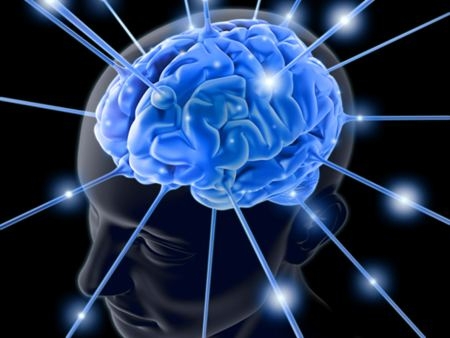
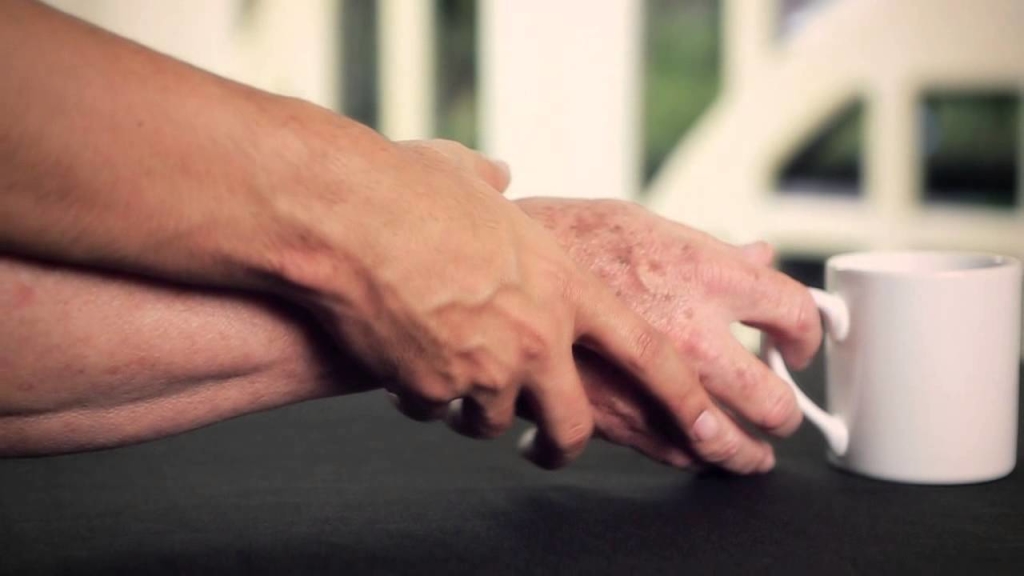


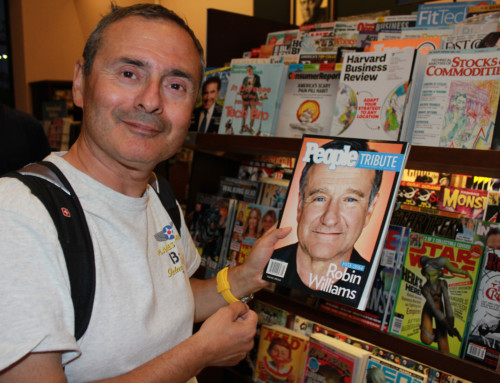
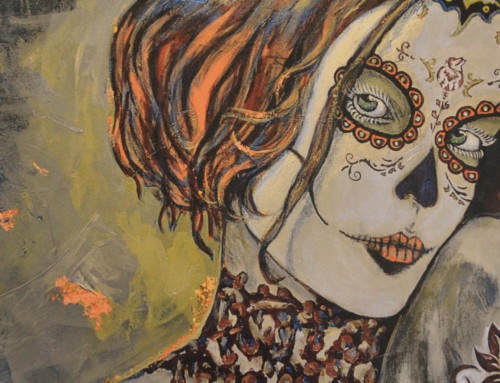
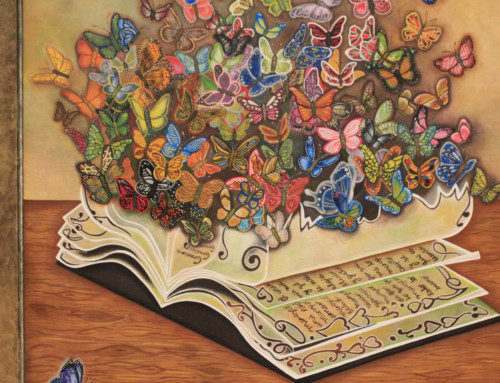

Scrivi un commento